Bethlehem
Also known as Beit Lahm, Beit Sahur, Bet Lehem, Betar, Beth-Lehem, Beth-lehem-ephratah, Bethlehemjudah, Bit-Lahmi, City of David, Ephratah, Ephrath.
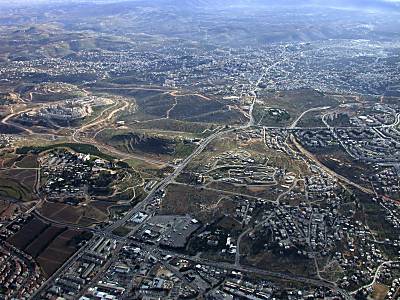
From the north
This aerial photograph shows the main road to Bethlehem from the north (Jerusalem). The modern city stretches out from the historic center in all directions. Today Bethlehem is controlled by the Palestinian Authority and has a population of about 22,000 not including the suburbs of Beit Jala and Beit Sahour.
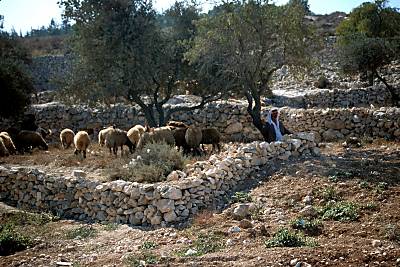
Shepherd with Flock
The area to the east of the city is traditionally believed to be the area of the fields of the shepherds "keeping watch o'er their flocks by night." Several churches have been built to commemorate this event. Even today local shepherds can be seen tending their flocks in this same area (even on Christmas eve!).
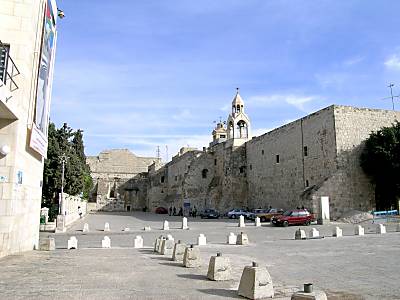
Nativity Church
The entrance to the famous church in Bethlehem is remarkably unimpressive. The large courtyard is perfect for priests, pilgrims or tourists, but most noticeable are the vendors. Palestinian police now patrol the area. Buses no longer are allowed to enter the square, but instead are directed to a large parking structure.
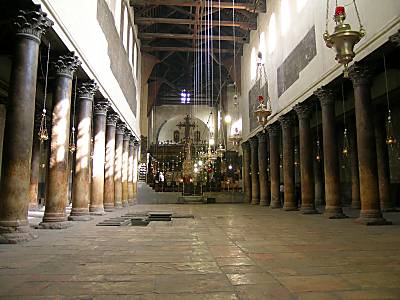
Church Interior
This building is the oldest standing church in the Holy Land. Originally built by Constantine's mother in the 4th century, Emperor Justinian rebuilt the current structure in the 530s. It was apparently spared destruction from the Persians in 614 A.D. because the invaders saw the depictions of the Magi on the walls. Local Muslim-Christian friendship is believed to be why the church was not destroyed during al-Hakim's rule in 1009.
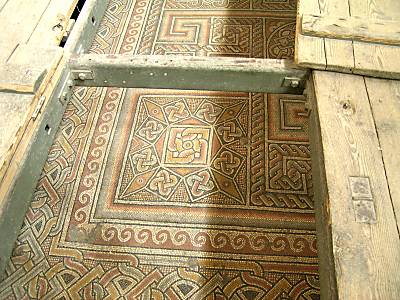
Ancient Mosaics
Underneath the present floor are beautiful mosaics of the earlier church. The church built at the direction of Constantine's mother was octagonal in shape, typical of Byzantine memorial churches. Before the Roman empire converted to Christianity, the area was a sacred grove of Thammuz.
The Birth Cave of Jesus
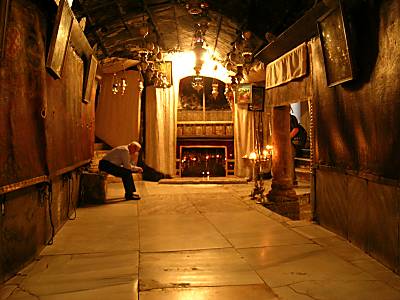
Early tradition places the birth of Jesus in a cave. Scripture doesn't mention the existence of a cave, and skeptics note that many biblical events were commemorated in caves (more convenient for pilgrims to be sheltered from sun and rain?). But it is also true that many houses in the area are built in front of caves. A cave could serve a household well by providing shelter for the animals or a place of storage.
The Birth Place of Jesus
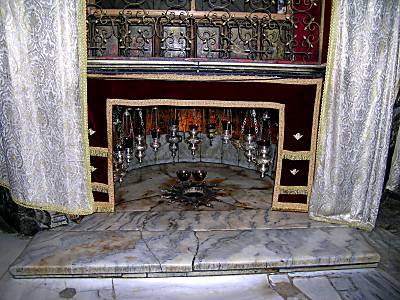
According to tradition, Mary gave birth to Jesus at the place of where the star is located on the floor. The tradition that the birth was in a cave is one of the oldest Christian traditions. Justin Martyr mentions it in the mid-2nd century, as does the Protoevangelium of James (also 2nd c.). Origen notes that the cave of Jesus' birth was pointed out in his day and no doubt this was the same place where the Byzantine church was erected.
